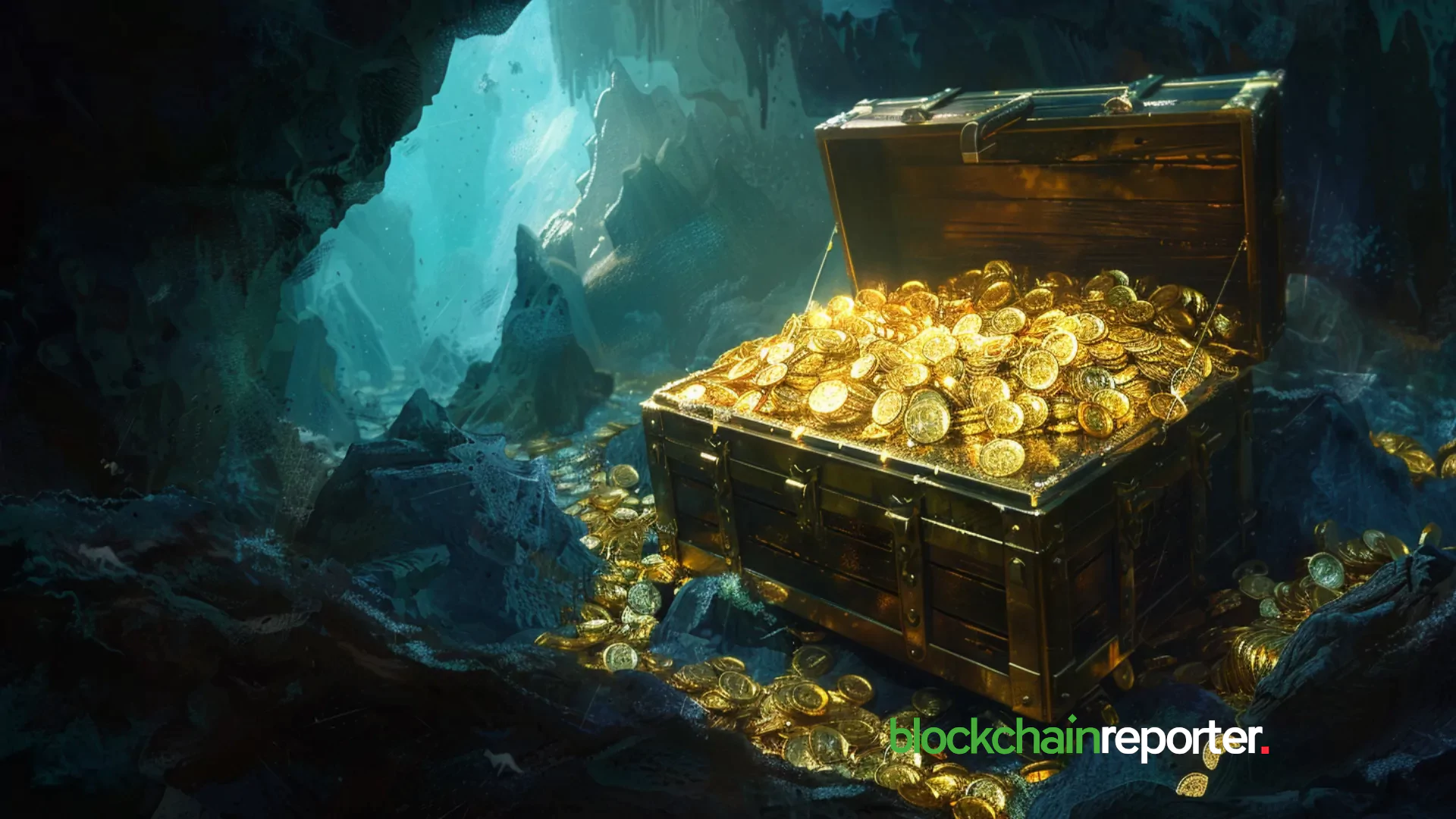
- 1. NFTs In A Nutshell
- 2. What It Is
- 3. NFT & Ticketing: A Match Made In Heaven?
- 4. Current Ticket Industry Flaws
- 5. Introducing GET Protocol
- 6. Buying your ticket
- 7. The secondary market
- 8. Lifecycle Of The Ticket
- 9. Claiming A Ticket As An NFT
- 10. The Benefits Of Using GET Protocol Fueled Tickets
- 11. To Summarize:
- 12. Tickets As NFTs
- 13. GET Protocol As The Ticketing Standard
- 14. Available Products: White Label & Digital Twin
- 15. White Label
- 16. Digital Twin
- 17. The Current Adopters/Integrators
- 18. Officially Announced Integrators:
- 19. The Upcoming Integrators:
- 20. Where Is GET Being Used?
- 21. The GET Protocol Token
- 22. $GET As A Gas To Fuel Tickets
- 23. $GET As The Governance Token
- 24. DAO’s Are Formed In Roughly Four Steps:
- 25. If This Is The End Goal, Why Is The Foundation Needed In The First Place?
- 26. GET DAO Treasury
From Eminem and Snoop Dogg to Paris Hilton and Justin Bieber. What they all have in common is that they’re involved with NFT
NFTs In A Nutshell
They are everywhere. From Eminem and Snoop Dogg to Paris Hilton and Justin Bieber. What they all have in common is that they’re involved with NFTs. In their case: NFT jpegs/digital art.
What It Is
An NFT stands for a “Non-Fungible Token.” A non-fungible token is unique and is as such stored on the blockchain. These tokens are mutually not interchangeable, meaning that all tokens are different from one another. Unlike for example Bitcoin (= fungible) where it doesn’t matter which of the 18,9 million Bitcoins you own. As they’re all the same and therefore interchangeable.
So in practice a unique token, representing something, can be transferred to someone else. Digital art NFTs are the current hype: artists mint NFTs and link their art to those unique tokens. Their art is then traded on marketplaces such as Opensea and Rarible.
Two examples of popular NFT digital art are Punks and Bored Apes.
The Crypto Punk above for example was sold for over 10 million $ last year. While the price floor (=lowest price) of a Bored Ape is 100 ETH (300.000$) at the time of writing.
Having tokens that have their uniqueness guaranteed through blockchain opens many possibilities. NFT art is just scratching the surface. NFTs will do much more than that!
NFT & Ticketing: A Match Made In Heaven?
NFT ticketing has many entrepreneurs envisioning a future where every ticket is an NFT. So why is it lately gaining so much traction? Let’s first dive into some of the current flaws in the ticket industry.
Current Ticket Industry Flaws
Before trying to solve anything, there has to be a problem. The current ticket industry has plenty:
- Ticket Fraud – When buying a ticket online it’s not always easy to know whether this is a real or a fake one. There are countless stories from people who have been scammed into buying fake tickets.
- Ticket Scalping – Once the ticket sale of a popular event starts, it’s a rush to get a ticket. What people don’t always know is that they’re not only rushing against other fans. But also against people who buy tickets for the sole reason of reselling them for a higher price (scalpers). And even sophisticated bots are involved. These scalpers make a fortune while not adding any value in the process. This at the expense of artists, fans, venues, event organizers, … and everybody who makes the event industry what it is.
- Artificial Lack Of Supply – It’s a known secret that too often ticketing companies only offer a part of the ticket inventory up for sale. They then use the remaining inventory (when the prizes have exploded as demand exceeds supply), to sell on third party websites. It’s a process of generating big profit for themselves while plucking fans.
- Not Knowing Who Owns The Ticket – With paper/PDF tickets, that have been resold, it’s for the ticket issuer not always possible to know who owns it at a certain point. Especially during COVID19 this has often led to problems. Take for example Lowlands. The event got cancelled and the original ticket buyers were reimboursed. This while the ticket holders, who bought the tickets second-hand, had their ticket invalidated. They were left at the mercy of the original buyer to get their money back. It gets even more difficult if the ticket changed multiple hands.
It’s above all an industry plagued by dishonest participants and one where no one trusts another. So the main problems that need to be solved are: scalping, the lack of transparency, traceability and proof of authenticity. It’s in essence an industry waiting to be disrupted through blockchain. But before we dive into that I want to make clear that a ticket merely being an NFT isn’t the ultimate solution to those problems. But combined with other tools, it doesn’t only solve them but adds benefits that were not possible before.
GET Protocol is a perfect showcase as it has achieved all of that. That’s why I’ll be focusing on their solution in this blog.
Introducing GET Protocol
GET Protocol is a project that saw the light of the day back in 2017. As a way of introduction: a clip of the early days, where their CEO (Maarten Bloemers) appeared on a popular Dutch talk show. Together with some Dutch artists he explained the problems in the industry and how he plans disrupt it.
In the meantime a lot has changed. Every GET ticket is an NFT and at the time of writing over 1,25 million on-chain tickets have been processed through it.
Buying your ticket
To make this work, the users must enjoy all the benefits of blockchain/NFT ticketing without experiencing any difficulties. There needs to be 0 friction. And this is the case. You buy your ticket with fiat money and check-out like you have always done. Everything else happens in the background. You don’t need an Ethereum wallet or any knowledge about blockchain/crypto whatsoever to buy a ticket.
The secondary market
Unfortunately for me the “First Release” is sold out. So if I want a ticket, I’ll have to get one from the secondary market. I do this simply by clicking on “Check Ticket Market”. In this case the event organizer has possibly decided that you can’t sell your tickets for profit as they’re being sold by “Katey” for the original price. There’s no way for me to find out who Katey is or to buy the ticket elsewhere than this app. Keep in mind that I also need the ticket transferred through the app to gain the dynamic QR-code on my phone. This grants me access to the event. Scalping is thus impossible.
I decide to buy this ticket from the secondary market. I check-out, pay and the ticket lands in my wallet of the ticketing provider’s app (in this case GUTS). Katey automatically gets the money deposited in her bank account. This is a simple process that doesn’t take longer than a few minutes.
Lifecycle Of The Ticket
In the background, at the very moment of purchase, an NFT gets minted that represents this ticket. If I wish, I can track the history of my ticket (important for authenticity, transparency and accountability) on the explorer. We can find the event we bought tickets for on the Polygon network.
Claiming A Ticket As An NFT
Claiming a ticket as an NFT is an “after the event” possibillity. It isn’t mandatory and only influences the “after the show” experience. I’ll get back to this and the benefits later. Claiming is done by either copy/pasting your wallet address in the app or scanning the QR-code of it.
The ticket NFT can then be held as a collectibe in your wallet or traded. The ticket I purchased from Katey will only be claimable as an NFT after the event has passed (more on that and the importance of it later).
The Benefits Of Using GET Protocol Fueled Tickets
GET Protocol fueled tickets revolutionize ticketing as know it. They provide all kind of benefits to everyone involved. Below are just some of them:
- The tickets can’t be scalped or frauded with
- Interaction with the fans – The ticket is linked to the phone of the ticket holder. This makes communication before, during or after an event possible.
- The event organizer always knows who owns the ticket – This makes reimbursing, after cancelled events, an easy and fair process.
- Data & Marketing – Digital tickets offer a lot more data on the attendees. An event organiser could for example target fans who haven’t bought a ticket yet but did visit previous shows. All the data on every single event can be tracked live on a dashboard.
- The option of dynamic pricing – Dynamic pricing enables artists to capture the real value of a ticket. Take for example charity events where only a certain amount of tickets are available. In that case the ticket buyers could outbid eachother. Once you’re outbid, you get a message and can either make another bid or get your money back.
- Control of the secondary market – An artist can set the rules of the secondary market. Some examples: 1. The ticket can only be re-sold for the original price 2. The ticket can be re-sold for max 3. x% profit – x% of the profit goes to the event organizer
- Countless other benefits that could be implemented – For example in the sports industry: one could allow season ticket holders to rent out their season ticket while a % of the rent goes to the club (win-win). Or imagine a football game where the spectator gets to see the replay of a goal on his mobile right in the stadium. The above is enforced by the following tools: 1. The moment you buy the ticket, the system links it to your sim card & phone number. 2.The ticket lives in a closed ecosystem/app of the ticket provider with pre-defined rules. Selling/transferring the ticket can only be done if those rules are met. 3. The ticket is invalid outside the ecosystem (enforced by a dynamic QR-code that changes every 5–10 seconds and is the only proof of right of entry)
To Summarize:
After you’ve bought the digital ticket (there’s no physical/PDF version of it), it is instantly linked to your phone and sim card. With a dynamic QR-code (proof of right of entrance) that changes every 5–10 seconds. This means that making a screenshot of the QR-code and sending it to someone else is fruitless. The holder of the screenshot will not have a right of entry as it will not match the scanner at the entrance.
The NFT ticket itself can only be claimed and released into your wallet after the ticket for the event has been scanned. This makes sense as otherwise you could just send it to a potential buyer and operate as a scalper.
You can test this out in the “demo event” and if you go to “ticketmarket” you can see the tickets being offered in the secondary market. Feel free to buy a test ticket, it won’t cost you any (real) money.
Tickets As NFTs
The introduction of NFT tickets above all offers a lasting connection between the artist and the fans. But they’re not the only benefits:
- Transparency & accountability – Anyone can check the lifecycle of any ticket (i.e. the price it was originally sold for, what price it was resold for, how many hands it changed, …) & its authenticity.
- Tickets as collectibles – Tickets that live in your wallet/on the blockchain forever and can’t be tampered with. Imagine owning Kurt Cobain’s/Nirvana’s last concert ticket NFT… this would certainly make a very valuable piece of a collection. Every wallet has a visualized fridge, where one can show off his collection.
- Tertiary trading market – I explained the existence of a secondary market in GET’s closed ecosystem, where tickets can be resold at certain rules. But tickets being NFTs opens the doors to a tertiary trading market: The claimed NFTs can be traded (like we see with digital art/jpegs) on platforms such as OpenSea. They can be programmed so that the artist gets a royalty split (meaning a passive income on every resale). Certain tickets can get uniqueness/rareness attached to them, making them more valuable than others. You can see GET NFT tickets on OpenSea here
- DeFi event financing – A very interesting use case of tickets being NFTs is that they can be used as collateral for event financing. In the future you should be able to invest in artists/shows of your preference by buying NFT tickets upfront and earning from them after they’ve gone on sale. The completion of the smart contracts and the first pilots are just around the corner! This blog goes into more detail.
- Fan Engagement – Artists get the tools to use NFT tickets for community building and fan engagement. Think of NFT tickets giving access to special community places or even being used for governance, where fans can vote on what they want in future shows. GET-powered NFT tickets create a lasting connection between artists and fans, make sure that the money ends up in the right pockets and offer tools that are only limited by one’s imagination.
GET Protocol As The Ticketing Standard
It’s important to know that GET Protocol isn’t a ticketing company. GET Protocol itself doesn’t sell any tickets. It’s a backend tech that can be adopted/integrated by ticketing companies (existing or new). At the time of writing 10 ticketing companies across the globe are using it as their ticketing infrastructure (more on them below). And many more are on their way.
The goal is to become the ticketing standard. Just like WordPress can be used by anyone with limited knowledge/resources to build a website, GET can be used by anyone who wants to be a ticketeer. And even by an established ticketing company that wants to tap into the benefits of NFT tickets.
Available Products: White Label & Digital Twin
Horizontal growth is achieved by offering clients two products: the White label and the Digital Twin.
White Label
When a ticketing company decides to adopt the White Label product they essentially get everything a ticketing company needs to start selling tickets: the backend, a mobile app, a website, … This product is aimed at anyone who wants to start a new ticketing company or existing ticketing companies that want to overhaul and upgrade their existing/legacy tech.
Digital Twin
The Digital Twin on the other hand is a product that is offered and used by existing ticketing companies who wish to keep their existing infrastructure, but at the same time tap into the benefits of NFT tickets.
The Current Adopters/Integrators
At the time of writing 9 officially announced ticketing companies use the protocol for all their tickets. The rate at which new ticketing companies are being integrated has increased a lot in recent months. I expect a snowball effect as a consensus is finally forming that NFT ticketing is the future.
It’s also important to note that while lately certain competitors are entering the space, none of them are even close to what GET has achieved in terms of product, innovation, adoption and scalability. GET has been around since 2017, battle-tested in over a million tickets and thousands of events.
Officially Announced Integrators:
- GUTS tickets (https://guts.tickets) – GUTS was the first ticketing company to integrate GET Protocol as a White Labeler. It was simultaneously created by the GET Protocol founders to showcase the tech. This makes sense as the chances of adoption in the industry, without a proven track record, would have been slim to nil. Meanwhile GUTS has grown to become one of the biggest ticketing companies in The Netherlands.
- getTicket – getTicket is a ticketing company based in South Korea. Right after the birth of getTicket, the pandemic hit and we haven’t seen much from them. But with links to K-Pop they’re certainly worth keeping an eye on.
- Wicket Events (https://www.wicketevents.com) – Wicket is a ticketing company based in Italy. Despite the virus restrictions Wicket has already done many events in the wine industry. They for example ticketed the digital version of the Milano Wine festival in 2020: They have also been seen creating events for the Giro D’Italia.
- TecTix (https://www.tectix.de) – A Germany-based ticketing company that sells GET fueled tickets with a focus on the sports industry. Comparable to getTicket they were created just before the pandemic hit so we haven’t seen many tickets sold from them yet.
- Flockey (https://flockey.nl) – Flockey is a new ticketing company that has been established in the Netherlands. They have a special monitoring system during covid19, worked with the Dutch government for test events and have ticketed the 2021 Eurovision Song Festival.
- Djebber (https://www.djebber.nl) – Djebber is a ticketing company from The Netherlands with a roster of comedy heavy hitters such as Jochem Myjer, Ronald Goedemondt, Jasper Van Der Veen, Henry Van Loon & more.
- Defy Tickets (https://defytickets.com) – DeFy Tickets was the first integrator based in the USA.
- YourTicketPovider (https://www.yourticketprovider.nl) – YTP is the first Digital Twin integrator. Based in The Netherlands, active since 2012 and with a track record of selling over 2 million tickets a year. They’re owned by cm.com (who sell multiple million tickets a year themselves, including Formula 1 events). Bart Peute, CEO of Yourticketprovider: ‘Thanks to this unique integration with the GET Protocol we will help organisers to enter, explore and monetize the many opportunities of this new online space using NFTs, for example a more secure secondary market, pre-funding events and selling digital merchandise. Also to a visitor a ticket is much more than a barcode and we now support the full visitor journey and experience offline and online.’
- XTIXS (https://xtixs.info) – XTIXS is active on several continents and serves a global audience of event clients. They have several standout festivals in their resume such as Exit 2.0, Cancun Music Week, Caprices, Secret Solstice and many more. Additionally, they also do tickets in sports: Mexican football club “Club Tijuana Xoloitzcuintles de Caliente” (or “Xolox”) is for example one of their clients.
The Upcoming Integrators:
- eTicketaBlanca (https://www.eticketablanca.com) – eTicketaBlanca is a Colombian ticketing company that facilitates events across the country, from sport to theatre and beyond. They will be the second Digital Twin integrator.
- Relic tickets (https://relictickets.com) – Based in the USA and judging from the things we’ve read about them: they mean business!
- NeonOx – We don’t know much about them yet, besides that they have been creating a lot of (test) events, using GET Protocol, that can be tracked on the blockchain.
- Jeike Ticketing (https://www.jeike.io) – A ticketing company created by Radix Sports Ltd on top of GET Protocol.
Certainly many more are on their way. The team has several times communicated that they’re swamped with requests from potential integrators all over the globe (averaging over 3 requests a day!).
Where Is GET Being Used?
GET is being used in many different industries. Below are just some of the examples:
- The event industry (you can find a list of some of the artists that have used GET fueled tickets here)
- Museums (example of an event)
- Universities (example of an event)
- Wine industry (Example of an event)
- Sports industry (Example of an event)
- Office registrations (Example of event)
If adoption is the confirmation of a usecase then GET Protocol has plenty !
The GET Protocol Token
As the goal of GET Protocol is to be fully decentralized (ran by GET holders through a DAO governance) and where payments are done on-chain, it has its own token. $GET has no “mint function” so no more $GET can ever be created. The 2 main functionalities of the token are “gas as fuel” and a “governance token”.
$GET As A Gas To Fuel Tickets
Every ticketing company that wishes to use the protocol to issue tickets, create events,… must spend (and thus buy from exchanges) $GET . This is called a “top-up”. As every ticket they issue requires $GET to act as fuel, this $GET is after usage transferred to the DAO treasury (more on that later).
- The price a ticketing company must pay per ticket is denominated in fiat. If $GET becomes less valuable, then the ticketing companies need a bigger amount of $GET/ticket and vice versa.
- A snapshot of the price is taken the moment they top up. This way they’re protected from a fluctuating $GET price.
- A dashboard will soon be released to make the process of buying $GET easier for all integrators.
- The cost in $ per ticket depends on the product they use (White Label vs Digital Twin) and on the functionalities they wish for their tickets to have.
- The usage of $GET is enforced through smart contracts. Ticketeers cannot use the protocol without spending $GET.
The usage can be tracked on-chain here
$GET As The Governance Token
The goal of the team behind GET Protocol is for it to become the ticketing standard. With this goal in mind the road is set for a fully decentralized protocol.
A DAO structure will be set up, which will govern the protocol. This process will be guided carefully by the foundation itself to ensure a smooth and effective transition. Below is a more in-depth explanation from the team on the process of setting it up:
“For those unfamiliar with the concept of a DAO or Decentralized Autonomous Organization, it is essentially an organisation created by a group of people that share a common goal and is enforced not through a chain of command or leadership, but instead through a set of rules that have been encoded as a computer program.”
“Thanks to the rise in smart contracts, this process has not only become a feasible possibility, it’s actually a successful reality. A great example of this is MakerDAO, which at the end of 2017 launched their DAI stablecoin and corresponding DAO through smart contracts. It’s arguably become one of the most successful projects, locking up $6.4 billion in its smart contracts at the time of writing. The community who hold Maker tokens are able to make governance decisions such as the annual borrowing fee, collateral needed and other DAI decisions. As can be seen through this example, these smart contracts are created with the goals of being open and transparent and thanks to running on a blockchain, decentralized.”
DAO’s Are Formed In Roughly Four Steps:
- A set of rules are designed and created around a shared goal, that will be coded into the DAO smart contract. This process involves heavy auditing to ensure that no security flaws are found.
- Before a DAO gets deployed, it is important for there to be a token structure in place, in which the community can become stakeholders and the DAO itself has a holding of tokens for organizational use and rewarding community activity. The community can use their tokens obtained in this stage to make governance decisions over the direction in which the DAO operates once the DAO is deployed.
- Once the core smart contract with all the rules has been audited and published and token funding has been completed, the DAO can be deployed so that it becomes fully autonomous. Since all rules, financial transactions and governance decisions are recorded on the blockchain, this means that the DAO can achieve full transparency, immutability and incorruptibility.
- In order for decisions to be made, proposals must be submitted and consensus is reached by having community stakeholders vote on the proposals that they wish to see implemented. The amount of votes a stakeholder has (or their voting weight) is often linked to the amount of tokens that they hold, with the percentage requirement needed for a proposal passing, coded into the DAO smart contract.
If This Is The End Goal, Why Is The Foundation Needed In The First Place?
Essentially, centralisation during the first years speeds up the process of adoption astronomically. As we are currently seeing take place.
During the beginning phase of the GET Protocol’s creation, It has been important for us at the foundation to be very hands-on in ensuring that we focus on onboarding ticketeers and entrepreneurs who share the same vision as we do, to provide the best possible ticketing experience for everyone in the ticketing chain.
Since inception we have seen the number of requests from companies and people who wish to implement the protocol skyrocket. We enact a level of vetting for all interested ticketeers, so that the first pioneering companies to implement the protocol, are those that we fully believe will be successful in sharing the mission of the protocol and upholding standards true to our own.
However, as we have mentioned from the start, the end goal of the GET Protocol is to be a decentralised system providing open source tooling for anybody, be it artists, venues, promoters and aspiring ticketeers to build their own ticketing company using the protocol. It should be as easy to create a ticketing company as creating a website with wordpress for example. To get to this point however requires time, battle testing of all of our systems and a guiding hand to ensure that the protocol reaches levels of adoption.
$GET tokens will essentially count as votes in a DAO organization and with that hold an extra value layer. Especially ticketing companies, being the most prominent stakeholders in the protocol, will want to own a good share of $GET. Their ticketing revenue relies on the direction/quality of the code to be on point.
GET DAO Treasury
At the moment of writing the DAO treasury holds around 2,6 million $GET. It is split into:
- an Ethereum wallet
- a Polygon wallet
Both wallets are essentially owned by the token holders. The Ethereum wallet received initial $GET tokens from the foundation. The Polygon wallet (also referred to as the “fee collector”) is one that will continue to grow as all ticket sales result in $GET being bought from the market and transferred into it.
This DAO treasury is owned by all token holders. It’s through governance (voting where more tokens carry more weight) where it will be decided what happens with these funds. The 2 most popular outcomes among the community/holders seem to be staking and burning.
- Staking – This being on the horizon has already been confirmed. With most crypto projects staking translates into “giving stakers tokens out of team-controlled wallets”. This of course dilutes the circulating supply and the staking rewards are nullified by a decreasing price. In GET’s case it is different. GET is one of the rare projects in the crypto space where profit is being made for the token holders. Therefore, the $GET that will be given out as staking rewards can completely come from market buys of $GET.
- Burning – Previous to the DAO treasury being created all of the (used) $GET was burned (burn wallet). The holders can still vote to do this through governance (or do it partially in combination with staking). This would reduce the supply of $GET and create more scarcity.









